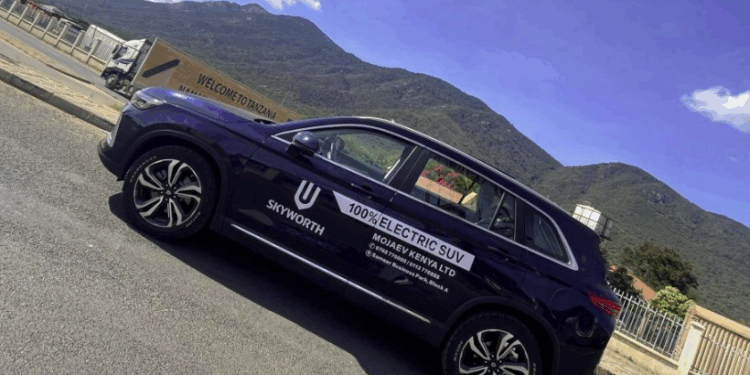The electric vehicle (EV) market in Kenya is experiencing a dynamic shift, moving from a niche novelty to a tangible, attractive option for the average Kenyan driver. A key driver of this change is the government’s supportive policy framework, primarily through significant tax incentives. With the latest updates on Import Duties and Value Added Tax (VAT), many are asking: are EVs truly affordable now, or is the upfront cost still a barrier?
This article breaks down the financial landscape of EV imports in Kenya for 2025, detailing how recent tax policies are reshaping the market and offering practical guidance for potential buyers.
The Game-Changer: Tax Incentives and Policy Shifts
The most significant factor influencing the affordability of an EV in Kenya is the structure of import taxes. The government has strategically used tax policy to encourage the adoption of electric mobility, creating a clear financial advantage for EVs over their Internal Combustion Engine (ICE) counterparts.
Key Tax Benefits for Fully Electric Vehicles (EVs)
| Tax Component | Rate for EV (2025) | Rate for Standard ICE Vehicle | Impact on Affordability |
| Import Duty | 0% (for fully assembled EVs) | 25% to 35% | Massive Cost Reduction. Eliminates the largest single tax component. |
| Excise Duty | 10% of Customs Value (CIF) | Varies from 20% to 35% | A lower, flat rate compared to the often higher rates on ICE vehicles. |
| Value Added Tax (VAT) | 0% (Zero-rated for EVs, batteries, and charging equipment) | 16% | Significant Saving. Removes a compounding tax applied to the CIF and Excise Duty. |
| Import Declaration Fee (IDF) | 3.5% of CIF | 3.5% of CIF | Remains the same, a standard charge. |
| Railway Development Levy (RDL) | 2% of CIF | 2% of CIF | Remains the same, a standard charge. |
💡 The Bottom Line: The 0% Import Duty and Zero-rated VAT are the primary reasons EVs are becoming a more financially viable option. For conventional cars, all these duties and taxes compound, often adding 80% to 100% (or more) to the vehicle’s landed cost (CIF). For an EV, this total tax burden is drastically reduced.
For drivers looking to explore sustainable mobility, EV24.africa offers import options for electric cars, expanding choices in both new and pre-owned EV models to meet the growing demand in the Kenyan market.
EV Prices in Kenya: What to Expect in 2025
While the tax reductions are impressive, the upfront purchase price of an EV remains the largest hurdle for many Kenyans. The market in 2025 is broadly split between popular, affordable second-hand imports and newer, slightly more premium models.
Popular and Affordable EV Models
The second-hand Japanese import market continues to be the entry point for most Kenyan drivers into EV ownership.
| Model | Estimated Price Range (KSh) | Approx. Range per Charge |
| Used Nissan Leaf | 1.2M – 1.7M | 150 – 200 km |
| Used Renault Zoe | 1.8M – 2.2M | 250 – 300 km |
| BYD Dolphin (New/Used) | 2.5M – 4.0M | 300 – 400 km |
To find second-hand cars suitable for these conditions, check out auto24.co.ke, where models like the Nissan Leaf and Renault Zoe are often available, allowing buyers to compare prices against ICE vehicles like the popular Toyota Vitz or Mazda Demio.
Practical Car Buyer Advice: Beyond the Price Tag
Buying an EV is different from buying a petrol car. Here are critical factors and actionable tips tailored for the Kenyan environment:
1. Battery Health is Paramount (Actionable Tip)
For used imports, the single most important factor is the battery’s State of Health (SOH).
- Action: Insist on a recent battery health check certificate. For cars like the Nissan Leaf, which uses passive cooling, SOH can degrade faster in the Kenyan heat. A car with less than 80% SOH will have significantly reduced range, impacting its utility.
- Read more here: Discover additional tips on assessing battery degradation for used EVs before you buy.
2. Ground Clearance and Range
Kenyan roads demand good ground clearance.
- Action: Compare the ground clearance of your desired EV with popular local models. The car’s advertised range (WLTP) will be lower in real-world Kenyan driving conditions, especially with heavy A/C use and traffic. Budget for a 20-30% drop from the advertised range.
3. Charging Solutions (Actionable Tip)
While public charging is expanding, most EV owners charge at home or work.
- Action: Calculate the cost of installing a home charger (Level 2). This is a one-time setup cost (KSh 50,000 – KSh 150,000) that must be factored into the overall budget. Take advantage of Kenya’s cheap overnight off-peak electricity tariffs.
The Total Cost of Ownership (TCO) Advantage
The true affordability of EVs shines when considering the Total Cost of Ownership (TCO). Even with a slightly higher upfront cost, an EV can save you significant money over its lifespan in Kenya.
- Fuel Savings: Kenya has some of the highest fuel prices globally. Electricity costs are substantially lower per kilometer driven.
- Maintenance Savings: EVs have fewer moving parts—no engine oil, no spark plugs, no air filters, and less brake wear (due to regenerative braking). This translates to dramatically lower service costs.
- Service Life: While battery replacement is a long-term cost, modern EV batteries are designed to last for 8-15 years or more.
For the latest automotive news, in-depth car reviews, and local driving tips, visit automag.co.ke. For a wider African perspective on the EV transition, a good resource is autoskenya.com, which offers analysis and guides tailored for local drivers and enthusiasts.
Conclusion: EV Affordability – The Time is Now
The question of How Affordable Are EVs in Kenya Now? has a clear answer in 2025: Significantly more affordable than ever before.
The combination of zero-rated VAT and 0% import duty has leveled the playing field, making the total import cost of a second-hand EV competitive with, or even lower than, a similarly-aged ICE vehicle in the 1.5M to 2.5M price bracket. The long-term savings on fuel and maintenance further tip the scales heavily in favor of electric mobility. As local assembly initiatives grow and more affordable Chinese models enter the market, we expect the initial purchase price to continue its downward trend. Kenya is on the fast track to an electric future.




